THIS week’s property review includes recently completed transactions of note and a wrap-up of interesting recent listings across the country.
Neighbours secure historic SA holding
Big River country tipped to make $20m
Berry family divides prime northern NSW country
Southern NSW grazing returns to the market
Adjoining blocks close to Tamworth offer versatility
Eyre Peninsula portfolio set to change hands
Neighbours secure historic SA holding
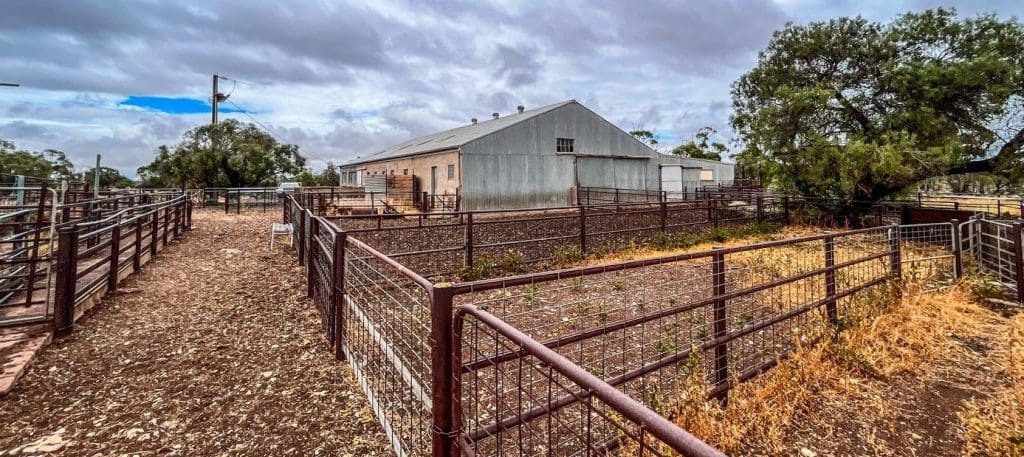
The Old Whydown Station sheep yards.
South Australia’s historic Old Whydown Station has sold to the neighbouring Mattey family of Mount Cone, ending 141 years of Bailey family ownership.
Jeff Oakley from Nutrien Harcourts was unable to disclose the price paid; however, a $5 million price guide was offered during the marketing campaign.
The 16,046ha aggregation, comprising Old Whydown Station and Munelta, is situated on the Barrier Highway, 58km north of Peterborough in the Nackara district.
Last year it received 320mm of rain, over and above the annual average of 244mm, based on 40-year-old records.
As a result, the property was boasting a surplus of feed — including salt bush, native grasses, clovers and sheltering vegetation — supporting 6500 head of sheep and 75 cattle.
Old Whydown features open plains and rolling hills offering 360-degree views from various peaks.
The property was settled in 1882 and members of the Bailey family have extensively developed its water network system, infrastructure, paddocks and stockyards.
The property is serviced by 11 bores, five unequipped bores and 20 dams. There are multiple troughs in the larger paddocks, while most paddocks have dam and bore water access.
Big River country tipped to make $20m
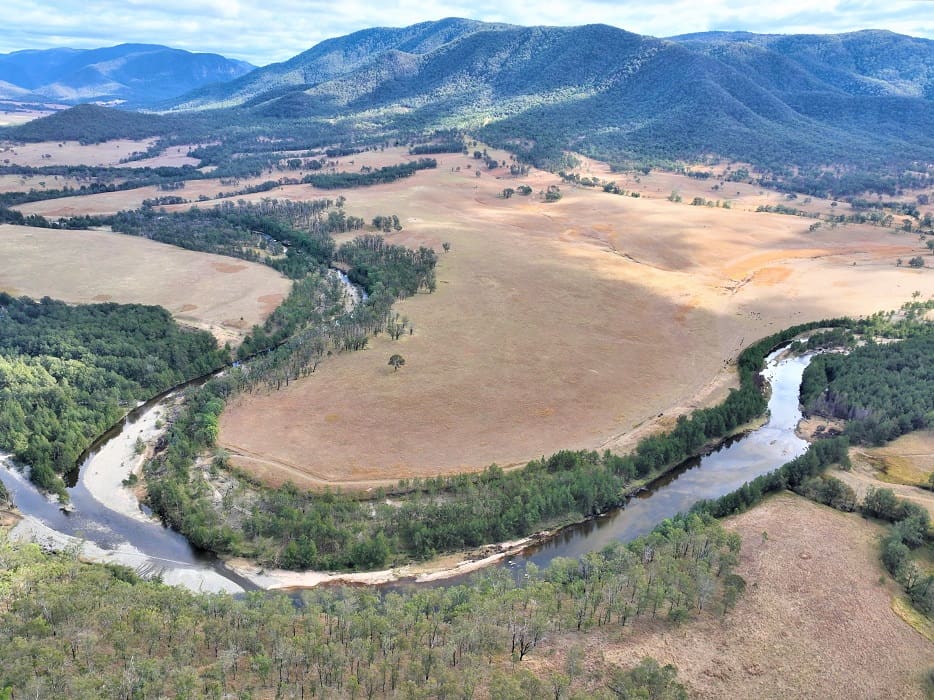
A river junction on Kintyre.
After less than two years ownership, Northern Territory cattlemen Steve Garner is selling the picturesque breeding property Kintyre in the big river country of northern New South Wales.
The well-watered property in the Newton Boyd district is 76km east of Glen Innes and 170km north-east of Armidale. It is anticipated to make around $20 million.
The 4481ha aggregation spans three holdings – Kintyre, Riversdale and Romsey – that can run 1400 cows or 17,600 dry sheep equivalents.
The country ranges from fertile alluvial river flats (259m above sea level), low grazing hills and steep ridge lines (865m above sea level) in an area that receives 757mm of annual rainfall.
Kintyre meanders through a wide, fertile valley and features 7km of dual frontage to the Henry River and 15km of frontage to the Mann River.
LAWD director Simon Cudmore said water security is near unparalleled.
“The property offers reliable water from a variety of sources, making it a safe and proven opportunity for livestock producers.”
Kintyre has 12 megalitres of unregulated water entitlement, 29 dams, numerous natural springs, and a reticulated trough system for year-round water supply.
In recent years, the vendor has installed more than 37km of new boundary and internal fencing.
Infrastructure includes two homes, two machinery sheds, a workshop, cattle yards, horse stables and a grain silo.
Kintyre is being offered for sale by expressions of interest closing on September 28.
Berry family divides prime northern NSW country
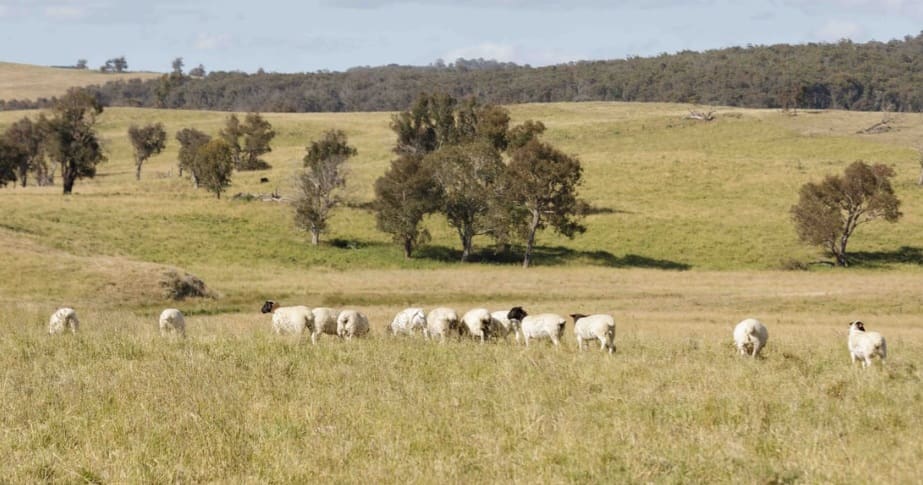
Some Dorper sheep on Spring Hills.
Mark and Angie Berry have carved off more than half of their prime breeding and backgrounding country on New South Wales’ northern tablelands and listed it for sale at $12.6 million.
In February, the couple offered the historic 3026ha Emu Creek — held by members of the Gill family for 155 years — but when it failed to sell, they announced a change in direction.
The Berrys are now selling the 1815ha Spring Hills portion of the holding for $6942/ha.
The property is 13km north-east of Walcha and 76km from Armidale, in a high rainfall grazing district on the south-eastern side of the New England tablelands.
Held by five generations of the Gill family, Spring Hills and Emu Creek were purchased at auction in 1868 by George Robert Gill for one pound per acre.
In its heyday, the property was a superfine wool growing operation spanning 32,400ha.
Today, the productive and well-appointed mixed grazing opportunity is suitable for any combination of beef, lamb and wool production.
The country on Spring Hills rises from gently sloping alluvial creek flats to undulating low grazing hills and timbered ridgelines underpinned by fertile basalt and trap soils supporting 10,700DSE.
Recently, the vendor has been conservatively running a mix of late Spring calving cows, replacement heifers and 2000 Dorper ewes lambing on a nine-month cycle.
The sale of Spring Hills is being handled by LAWD and McCulloch Agencies. Both report the price and scale are attracting good local enquiry.
They said the smaller parcel of land is appealing to a wider buyer audience, ranging from small to medium farming families. With the majority of infrastructure on Emu Creek, Spring Hills is also viewed as good value in comparison to other local properties.
The agents claim there is significant potential for further development and expansion of operational scale.
“The country is highly responsive to pasture development with the areas sown to improved perennial grass and clover pastures sustaining 15DSE, representing a 75 percent uplift in carrying capacity from the native perennial grass and clover pastured land,” they said.
Spring Hills is situated in a 709mm average annual rainfall area and also watered by 3.9km of double frontage to the permanent Dog Trap Creek, 6.2km to the permanent Brookmount Creek, nine dams and two bores.
Fit-for-purpose operational improvements on Spring Hills include a two-stand shearing shed and cattle and sheep yards.
Southern NSW grazing returns to the market
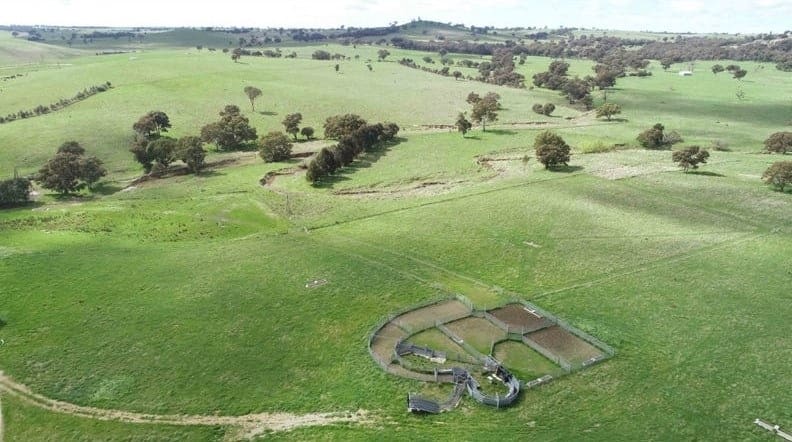
Warradale from the air.
Close to $19 million is expected for some productive, high rainfall grazing country on New South Wales’ southern tablelands.
The Warradale Aggregation is located 22km from Yass and 91km from Canberra.
It is being offered as one line – the 1342ha Warradale for $18.9m ($14,080/ha), or as two separate assets – the 817ha Warrawee for $12.4m ($15,175/ha) and the 525ha Oakdale for $6.5m ($12,376/ha).
Warradale has returned to market after three years ownership by Alex and Angus Metcalfe after they secured neighbouring country at Galong.
LAWD agent Col Medway said selling Warradale wasn’t on the agenda, with the vendors recently constructing a brand new four-stand shearing shed and yards.
Equally suited to any combination of beef, lamb or wool enterprises, the undulating country can comfortably support 840 late winter calving cows or more than 13,000DSE.
The highly improved property is well-appointed with fit-for-purpose operational improvements for both enterprises.
Warradale benefits from significant investment in the pasture base that includes 790ha of highly improved native perennial grasses and clovers.
Situated in a reliable non-seasonal rainfall area of 682mm, Warradale is supported by dams with extensive catchments and two creeks.
Adjoining blocks close to Tamworth offer versatility
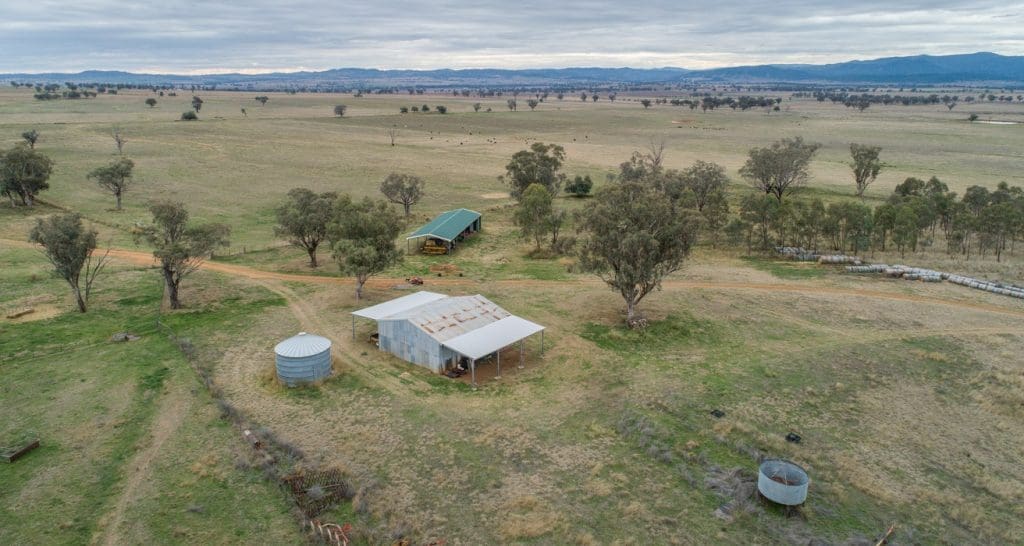
An aerial view of some of the Werribee Park Agg country and infrastructure.
Two neighbouring properties that once formed part of the sprawling Goonoo Goonoo Station in northern New South Wales are being offered for separate sale.
The 405ha Werribee Park Aggregation and the 142ha Hazeldene are situated 20 minutes north-west of Tamworth.
Werribee Park Aggregation vendors Matthew and Calli Kaluder have been running a cattle and sheep trading operation, as well as cropping, for the past seven years.
Around 80 percent of the undulating and productive flats are arable and feature a mix of light to heavier red soils growing native, lucerne and sub-tropical pastures.
It comprises:
105ha Werribee Park – featuring the original, federation Goonoo Goonoo three-bedroom homestead with 360-degree district views, a three-stand shearing shed, sheep yards, two machinery sheds and an equipped bore.
100ha Ravenscroft – an unequipped bore and three dams.
100ha Rose Cottage – a two-bedroom cottage, cattle yards, two machinery sheds, an unequipped bore and one dam.
100ha Werribee Downs – a new unequipped bore and four dams.
The Jeffreys family has held Hazeldene for 95 years and once owned the adjoining Werribee Park.
The current owners John and Susie Jeffreys, who are planning to retire, have been running a cattle trading operation and growing some crops.
Like the adjoining Werribee Park, Hazeldene has undulating and productive flats with light to heavier rich red and black soils growing a mix of native pastures.
The country is divided into nine paddocks with a laneway system for ease of mustering and watered by two bores.
The quality infrastructure includes a machinery shed and cattle yards, with most of the fencing replaced in the last five years.
McCulloch Agencies agent George Barton was unable to put a price on the properties due to the number of available purchasing options.
“For instance, interested parties have the opportunity to acquire Werribee Park Aggregation as a whole, two bare blocks or two blocks with a dwelling on each, each sold separately or as one parcel,” he said.
Mr Barton said enquiry is coming from a range of buyer profiles.
“There has been good interest from producers seeking to aggregate the two properties, as well as lifestylers seeking smaller individual blocks.”
Werribee Park Aggregation and Hazeldene are being offered for sale by separate expressions of interest closing on August 31.
Eyre Peninsula portfolio set to change hands
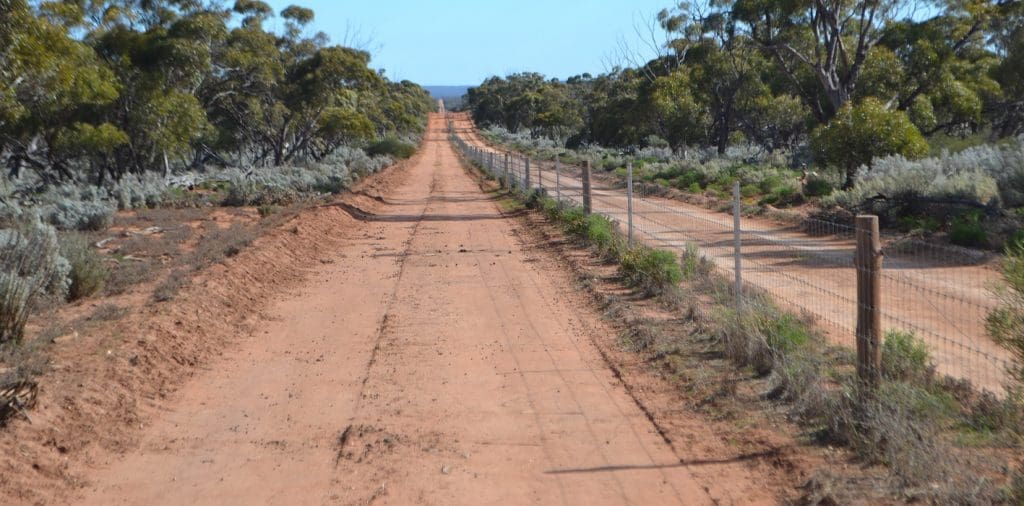
Some of the clean fencelines on Yeltana Station.
Around $20 million is expected for the Allen family’s portfolio of properties on South Australia’s Eyre Peninsula.
Spanning almost 14,000ha across seven properties, the portfolio comprises two distinct hubs – a 9240ha grazing block and 4572ha of farming land.
Yeltana Station is situated 35km north-east of Kimba and is rated at 970 dry sheep equivalents.
Historically, Jason and Sonia Allen together with Trent and Laura Allen have run a mixed operation of 5500 Dorper ewes plus replacements, 100 cattle and 80 horses.
There is an opportunity for goat harvesting on Yeltana, that features native vegetation with some clearings. The property is well fenced and watered by two dams with solar pumps.
With a 970DSE rating, Yeltana is anticipated to make between $800 and $900 a head.
The cropping country consists of six holdings – Wannamanna, Allen Park, Woolfords, Panitya, Wudinna East and Jasons Block that are located in Wudinna, Kyancutta and Panitya.
Some of the properties have been held by the Allen family for up to six generations, with Albert James Allen purchasing the first property in 1911 and the family continuing to acquire properties over the past 110 years.
CBRE Agribusiness agents Phil Schell and Angus Bills are managing the sale via a two-stage expressions of interest campaign closing on September 14. All of the properties are being offered in one line or as individual holdings.
Mr Bills said over recent years, the Eyre Peninsula has benefitted from above average harvests.
“The 2023 crop is off to a good start due to early rainfall and most crops across the district are well established.”
Mr Schell is anticipating interest from local farming families, out-of-district producers and city-based investors.

HAVE YOUR SAY